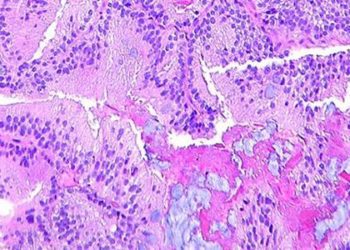Exercise improves sexual function in men with prostate cancer
1. In this randomized clinical trial, exercise was significantly associated with improved sexual function in men with prostate cancer.
2. The group that received exercise and psychosexual education and self-management intervention (PESM) did not result in further improvement compared to the exercise-only group.
Evidence Rating Level: 1 (Excellent)
Study Rundown: One common adverse effect following treatment of prostate cancer is sexual dysfunction. The current treatment for this is pharmacotherapy, however, sexual dysfunction is more nuanced, and affects different areas of health, such as physical and psychological. One proposed treatment to counter these effects is exercise. Research on the impact of exercise along with psychosexual education has been limited. To address this knowledge gap, a randomized controlled trial conducted on men with prostate cancer, aimed to determine the efficacy of exercise on sexual function and if exercise combined with psychosexual education and self-management intervention (PESM) leads to a more pronounced effect. The primary outcome was changes in sexual function over 6 months, while the secondary outcomes were physical factors associated with sexual dysfunction. The exercise sessions consisted of aerobic and resistance training 3 times per week for 6 months. The exercise plus PESM group had the same exercise sessions and a brief intervention to promote psychological and sexual health. Participants in the usual care group continued their normal physical activity routine. Exercise was associated with improved sexual function, including decreased erectile dysfunction, in men with prostate cancer. Further improvement with the PESM intervention was not noted. The men in the exercise group also had decreased fat mass, and increased body strength compared to the usual care group. The study was limited in generalizability due to the single-center nature, and a small sample size including motivated men. Despite these limitations, the results support exercise uses to improve sexual function in men with prostate cancer.
Click here to read the study in JAMA Network Open
Relevant reading: Exercise and prostate cancer: From basic science to clinical applications
In-Depth [randomized clinical trial]: This randomized clinical trial evaluated the efficacy of exercise and PESM on sexual function of men with prostate cancer. Recruitment was completed through invitations to patients via their urologist or oncologist. The participants were stratified into groups by age (<60 or ≥60 years) and current sexual activity (yes or no). A total of 112 men (mean [SD] age, 66.3 [7.1] years) were included and randomized to usual care (n=37 [33.0%]), exercise only (n=39 [32.1%]) or exercise and PESM (n=36 [34.8%]). Using the International Index of Erectile Function (IIEF) score at 6 months, patients in the exercise intervention group (5.1 points) had a significantly improved erectile function compared to patients in the usual care group (1.0 points; adjusted mean difference, 3.5; 95% CI, 0.3-6.6; P=.04). There were no further improvements in the exercise and PESM group. Comparatively, there was no significant improvement in intercourse satisfaction (adjusted mean difference, 1.7; 95% CI, 0.1-3.2; P=.05). At 6 months, there was a greater reduction in fat mass with exercise compared to usual care (-0.9 kg [95% CI, -1.8 to -0.1 kg; P=.02]) however, there was no between-group difference in lean mass. Similarly, the exercise group also had significantly improved upper (adjusted mean difference, 9.4 kg; 95% CI, 6.9-11.9 kg; P<.001) and lower (adjusted mean difference, 17.9 kg; 95% CI, 7.6-28.2 kg; P<.001) body strength compared with the usual care group. Overall, this study demonstrated that exercise with or without the addition of PESM effectively improves sexual function in men with prostate cancer.
Image: PD
©2025 2 Minute Medicine, Inc. All rights reserved. No works may be reproduced without expressed written consent from 2 Minute Medicine, Inc. Inquire about licensing here. No article should be construed as medical advice and is not intended as such by the authors or by 2 Minute Medicine, Inc.









